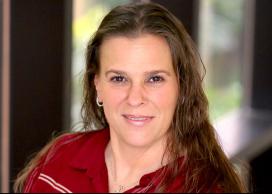Teaching in focus: Patrick Walls
Learn more about the work of our educators at UBC

February 21, 2023
Name:
Patrick Walls
My pronouns:
he/him
Title:
Associate Professor of Teaching
Department/Unit:
Mathematics
Location:
Vancouver
Year I started working at UBC:
2015
What first motivated you to become an educator?
I've always loved mathematics but I discovered it was the joy of learning new things that I loved most. I earned undergraduate degrees in mechanical engineering and mathematics, studied number theory and algebra in graduate school and finally I discovered machine learning and data science as a postdoctoral fellow. I became an expert learner and wanted to share my love of learning as well as the tools I have used to become a life-long learner.
Tell us more about your work.
A lot of my teaching is based on mathematical software and computational thinking. I use open source programming languages and web applications such as Python and Jupyter in the classroom. We study abstract concepts in mathematics which lead to beautiful formulas and then use Python code to compute explicit examples to verify and further explore these formulas. I am most proud of "Mathematical Python," a web-based textbook I built with Jupyter notebooks.
What inspired your particular approach to teaching?
Python and Jupyter have transformed how I teach mathematics. Not long ago computers were only accessible to students at specific times in labs in distant buildings on campus. Now, cloud computing and web applications allow students to use any device at any time to access computational tools. Python and Jupyter inspired me to replace the chalkboard in my classroom with code so that students are learning these essential skills along with fundamental mathematics.
What have you learned while teaching that has surprised you the most?
I am grateful to have attended a CTLT Course Design Intensive in 2015. The workshop introduced me to the principles of learner-centred teaching which include shifting control of student learning from instructors to students. I learned that a perfect presentation does not lead to perfect learning and we must engage students in the messy job of learning.
What impact do you hope to have on your students?
I want my students to become creative problem solvers. We teach lots of mathematical theory, applications and computational skills, but most importantly we teach problem-solving skills. I want my students to go off into the world and encounter big, important problems and then break them into simpler pieces, find relationships between what is known and unknown, derive possible solutions and then evaluate the veracity of their own work.
Are there any colleagues or mentors you’d like to acknowledge and why?
My work would not be possible without Prof. James Colliander and Dr. Ian Allison at the Pacific Institute for the Mathematical Sciences (PIMS). They created ubc.syzygy.ca which allows students to log in on any device using their CWL and work with Python and Jupyter. Marlene Tecson-Golfinopoulos is the Department Manager in Mathematics. Marlene and I collaborated with the UBC Learning Spaces team to renovate LSK 121 into a space designed for collaborative mathematical computing.
Learn more
- Our people
- Teaching and Learning
- Teaching in focus






